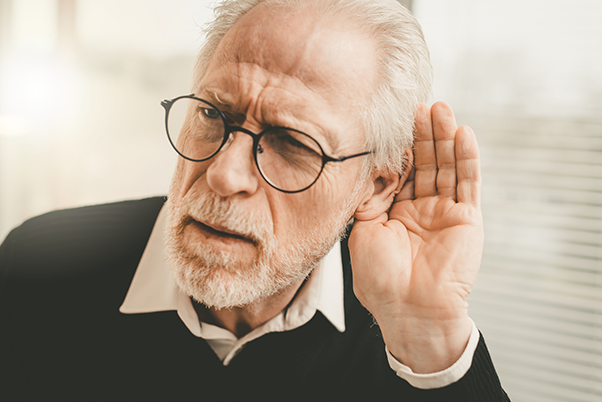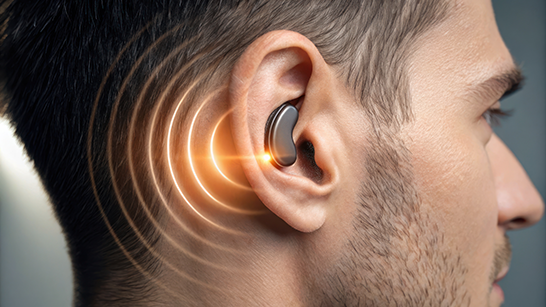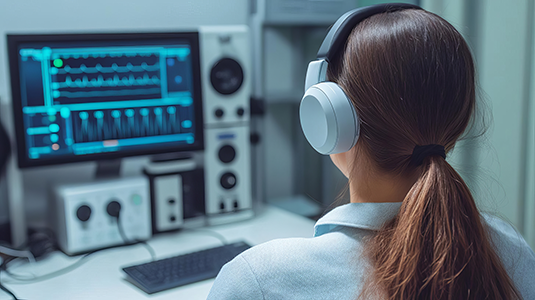What is a hearing aid fitting and why is it important?: How Proper Setup Turns Tech Into Better Hearing
A professional hearing aid fitting is the first step towards better hearing for individuals with specific hearing loss. This process involves a personalized approach led by a hearing care professional or audiologist to ensure optimal performance tailored to the individual’s level of hearing loss and daily needs. The fitting involves tests, including real ear measurements, to accurately adjust the device based on the individual’s hearing, ear shape, and lifestyle. The goal is to provide a comfortable, effective solution that supports one of the most important senses.

A hearing wellness center guides the wearer through every step, from selecting the right model to real-time adjustments, ensuring the wearer gets the best out of modern hearing aid technology. A successful fitting not only restores access to clear, rich sound but also improves emotional well-being, boosts confidence, and strengthens connections with others.
Understanding Hearing Aid Fitting: What It Really Means
Hearing aid fitting helps to match the hearing aid to what you need. A hearing care expert will start by using in-depth hearing tests. This lets them understand your hearing profile. After this, the professional fitting will make sure your hearing aid has a good physical fit in your ear. During this fitting, the expert will change settings such as volume and background noise. This way, the hearing aid works better for you and your hearing profile. A good fitting means your device will feel comfy and help you hear well every day.
This helps the hearing aid work its best for you in many places where you might hear sounds. Unlike things you buy at the store, a hearing aid fitting gives you care made just for you. This way, you can talk to people easier, feel more comfortable, and get better sound from your hearing aid.
What is a hearing aid fitting and what does it involve?
A hearing aid fitting is a personalized process where audiologists adjust devices to optimize sound for individual needs. It involves assessing hearing loss, selecting appropriate technology, and fine-tuning settings. This ensures comfort and enhances auditory experience, making it crucial for effective hearing aid performance and user satisfaction.
How a Hearing Aid Fitting Differs From Just Buying Devices
A professional hearing aid fitting can help you get better results with your hearing aid for a long time. If you just buy the devices on your own and do not get proper fitting, you might feel upset, and it may not work well.
| Aspect | Hearing Aid Fitting | Buying Devices Only |
| Initial Assessment | Comprehensive hearing evaluation by an audiologist | Often skipped or based on self-diagnosis |
| Customization | Tailored settings based on hearing profile, ear shape, and lifestyle | One-size-fits-all presets, minimal adjustment |
| Device Selection | Professional guidance in choosing the best model for specific needs | Self-chosen, possibly based on price or appearance |
| Fitting Process | Includes real-ear measurements, comfort checks, and personalized sound tuning | Basic setup or default settings only |
| Support and Follow-up | Ongoing care, fine-tuning, and troubleshooting by a specialist | Limited or no follow-up support |
| Education and Counseling | Training on use, maintenance, communication strategies, and expectations | Rarely includes any training or user education |
| Long-Term Outcomes | Higher satisfaction, better speech understanding, and improved hearing performance | May result in poor experience and early abandonment |
The Role of the Audiologist in the Fitting Process
Audiologists play an important part in the fitting process of hearing aids. They do a hearing test to find out the details of your hearing loss. This helps them make a hearing profile just for you. At your fitting appointment, the audiologist will set up the hearing aids to match your needs. They will do verification tests, like real-ear measurements, to make sure you get the right sound. This process is done to make the hearing aids feel good and work well for you. The audiologist will also answer your questions and show you how to use, clean, and take care of the hearing aids. They want you to feel at ease with your hearing aids and will help fix any problems. Their goal is to give you support and make your experience positive during your hearing journey.
Why Proper Hearing Aid Fitting Is Essential for Australians
In Australia, hearing health is key to having a good life. A hearing aid fitting done by a professional can help your hearing aid work in the way you need. When you go to a hearing wellness center in Sydney or Melbourne, the team works to get the hearing aid fit just right for you. This helps you get the most out of your hearing aid and feel better in your day-to-day life.
With the right fitting, you will have a hearing aid that works for you and your way of life. This helps you hear well each day. A good hearing aid fit can make it easier to talk with people and helps you pick up on sounds around you. A well-fitted hearing aid can change the way you hear things and help you enjoy every day more.
Personalised Settings for Varied Hearing Needs
Hearing loss can be different from one person to the next. The way a hearing aid works for you will depend on your type of hearing loss and your specific hearing needs. That is why it is so important to have hearing aid settings made just for you. When your hearing aid settings are set to your needs, every part of the device is adjusted just for you.
This is how the right hearing aid settings can help different people:
- For noisy environments: Changes to the hearing aid can help you hear people better when it is loud, so you get clearer talk.
- For music lovers: The hearing aid can be set to make music sound better, so you enjoy your songs more.
- For work or study: You can use accessories, such as remote microphones, to help you hear your friends, teachers, or coworkers when you need to listen at work, in meetings, or in class.
- For TV enthusiasts: Special accessories, like TV streamers, can make watching TV better, so you enjoy your shows more.
When you go in for a hearing aid fitting, the audiologist will check what type of hearing loss you have. This way, they can set up your hearing aid the right way. During the fitting, they make all the needed changes to the hearing aid settings. A hearing aid is not just about making things loud. It helps you enjoy life more, like hearing your friends, listening to music, studying, or watching TV.
Impact on Daily Life, Communication, and Wellbeing
A hearing aid fitting is more than just putting on a hearing aid. This is a step-by-step process that makes sure the device is right for you. A good fitting helps the hearing aid work for your own hearing needs. If the fitting is done well, it can help make life better in many ways.
- Improved Daily Functioning – A hearing aid with the right settings helps people get around every day. It works well in quiet rooms and on busy streets.
- Clearer Communication – A hearing aid that fits well makes speech easier to hear. People will not need to repeat things as much, and there will be fewer mix-ups.
- Enhanced Social Life – When you hear better, you feel more sure about taking part in talks, going to events, and meeting up with people.
- Greater Emotional Wellbeing – Many say they feel less upset, lonely, or worried with a hearing aid. It makes listening and talking with others easier.
- Better Work Performance – A hearing aid set up for you helps you do well when you need to focus, like in meetings or on phone calls.
- Increased Device Comfort and Use – A hearing aid that fits you will feel better to wear. You will want to use it more and get all the good things from it.
- Higher Satisfaction and Long-Term Success – A well-fitted hearing aid meets your needs from the beginning. This helps you want to keep using it and feel happy with it for years to come.
A hearing aid fitting is not something you can skip. It is needed to help get back your hearing. A fitting also helps improve your quality of life. With a hearing aid fitting, you can feel more connected to people. It can make you feel better about your life, too.
Maximizing the Benefits of Technology
Modern hearing aids use the latest technology. They can change settings to fit your needs. To get the best results from them, you need a professional fitting. A professional fitting will make sure your hearing aids work well for you.
A fitting appointment will help set up things like microphones that take in sound from certain spots and also block out a lot of unwanted noise. With these changes, your hearing can get better in lots of places. The fitting works to make sure your modern hearing aids fit the way you live, so you get clear and steady auditory experiences. If you get the right fitting, modern hearing aids can really help you every day. They can help bring sound back into your world.
The Role of Technology in Improving Hearing
Technology has changed how people use hearing aids. These devices are now made to help with specific needs. Today, you get hearing aids with smart features. These features match your own auditory experiences.
| Technology Feature | Auditory Benefits |
| Bluetooth connectivity | Makes it easy to take calls and stream from your smartphone. |
| Automatic noise reduction | Helps you hear people speaking by lowering any extra noise. |
| Directional microphones | Lets you hear conversations more clearly when it is noisy. |
| Rechargeable batteries | Gives you an easy option instead of needing new batteries often. |
These new upgrades make a hearing aid easier to use and more dependable. But to get the most out of it, you need to go through the right fitting process. The hearing aid should be set up in the best way for you. A good fitting means you get a better listening experience.
How technology advancements have improved the fitting process
Technological advances make hearing aid fittings quicker, more exact, and better suited to each person. These changes now help make the whole experience better for you and can lead to better results.
- Real-Ear Measurements (REM) – Today’s hearing aids can measure sound right in the ear canal. This helps make sure the level of sound is just right for each person’s ear shape.
- 3D Ear Scanning – Digital scans now take the place of messy putty molds. They make earpieces that fit well and feel good, giving you a more comfortable experience.
- Automated Fitting Algorithms – Software uses your hearing test to set the hearing aid in seconds. This means you do not waste time on trial-and-error fitting.
- Remote Fine-Tuning – A hearing aid can be adjusted by your audiologist over a phone app. You do not have to go in every time, so it is faster and easier to get the right fit.
- Artificial Intelligence (AI) – Modern hearing aids use AI to learn what settings you like in different places. It then changes the fit and sound by itself, helping you hear well everywhere.
- Data Logging – A modern hearing aid tracks what listening environments you are in and how you use it. This can help your audiologist make the device fit you better over time.
- Wireless Connectivity – A hearing aid can now sync with your phone or other devices while you wear it. You or your audiologist can make changes any time without having to take out the hearing aid.
Technology has changed the fitting process, making it go from being done by hand and the same for everyone to being more personal and able to adjust to each person. This helps people feel more comfortable, see things more clearly, and feel better about the fitting they get.
Continued Support and Adjustments for Optimal Results
Hearing aid success depends on having regular appointments with your audiologist. This helps make sure the device fits well and changes as your needs do. During the adjustment period, the audiologist and you work together to solve common issues. Some of these problems are how the hearing aid fits or if it makes feedback sounds. The hearing aid is changed and set up for your daily life. At each step, you get support from the expert. This way, your journey to better hearing stays on track with help when you need it.
How to Prepare for Your Hearing Aid Fitting Appointment
Getting prepared can help you get more out of your fitting appointment. Here are some easy things you can do before you go in for your fitting:
- Bring your hearing test results: The audiologist will need these. They use them to get your hearing aids ready just for you.
- Prepare questions: Write down any things you want to ask about the hearing aids or the fitting process.
- List priorities: Think about where in your day or life you want to hear better. It could be at work, at home, or in other places.
- Take a trusted companion: Bring someone you know and trust with you. They can help you and might give some more good ideas too.
When you are ready for your fitting appointment, things can work out well. Your audiologist will understand what you need. You and the audiologist can make a plan that fits you best.
Importance of Follow-Up Appointments After Fitting
Follow-up appointments are an important step in the hearing aid fitting process. They let the audiologist check how you are doing and change your hearing aid settings so they fit better in your daily life. These visits also give you a chance to talk about any problems or worries you might have with the hearing aid. Regular checks help make sure the sound stays clear as your needs change. Having regular reviews is a key part of getting the best results from your hearing aid fitting.
Can I adjust my hearing aids myself after the initial fitting?
You can use an app to make some small changes to your hearing aid. But you should not try to change the main hearing aid settings by yourself. Let your hearing care provider handle the big changes. This helps keep your hearing aid’s professional fitting just right for you. It also helps your hearing aid work well during the adjustment period.
Will my hearing aids need to be refitted over time?
Yes, you might need to get your hearing aids set up again if your hearing abilities or your needs change over time. It is good to have regular appointments with your hearing healthcare provider. This can help keep your hearing aids matched to your hearing profile, so they feel good to wear and work well for you.
How do I know if my hearing aids are fitted correctly?
Properly fitted hearing aids should feel good and sit well in your ears. They are made to help you hear better. You should not feel any discomfort, and they should not make strange sounds. An audiologist will check the hearing aid fit for you. They use special verification steps, like real-ear measurements, to make sure your hearing aid works well for your needs.






